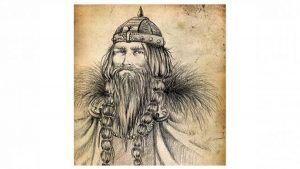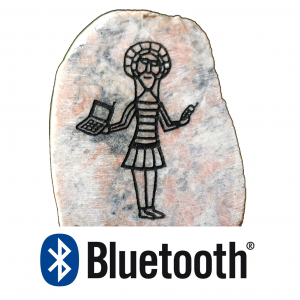The Nordic connection – the 10th century Danish king and modern technology

What is the connection between a 10th Century Danish king and modern technology?
The answer starts in 20th, not the 10th Century. In 1996, three companies were ll looking to create the industry standard for a short-range radio link that could be used to connect a range of appliances.
As none were making the necessary breakthrough, the different teams started to explore the possibility of working together, and some meetings were arranged for the three companies to talk to some target customers at the same time. It soon became apparent that while they were now in the same room together, they were to paraphrase the old George Bernard Shaw quote, three companies separated by a common language. Intel would talk “Biz-RF,” Ericsson “MC-Link” and Nokia “Low Power-RF.”
This clearly didn’t help their pitch and often caused confusion. It was obvious that they needed to have and use a single name.
In December, the companies decided to create a Special Interest Group (SIG). They met in Lund, Sweden at the Ericsson plant to thrash out the final details of the open IP (intellectual property) policy which would allow them to take the best elements of each other’s approaches and put them all together.

When they turned to the discussion of the name, Jim Kardach of Intel suggested that the SIG should adopt the codename ‘Bluetooth’, until the soon to be formed marketing group would be given the task of coming up with the final name.
Kardach had chosen Bluetooth as it was the name of a 10th Century Danish king who was famous for uniting Scandinavia. The Intel engineer thought there were obvious parallels with the technology they were developing which aimed to unite the PC and cellular industries with a short-range wireless link.
Asked about where he got the inspiration from, Kardach explained that he traces it back to an earlier business trip where he and Sven Mathesson of Ericsson were presenting their technology proposal to a potential customer; Sven was pitching it as MC-Link, and Kardach pitching it as Biz-RF.
Their respective pitches were both soundly rejected. The pair set off on a pub crawl through wintery downtown Toronto.
They got talking about history and it turned out that Mathesson had just read this ‘Longships’ by Frans G. Bengtsson. In the book a couple of Danish warriors travel the world looking for adventure, and the king during the time when it was set was Harald Bluetooth.
By coincidence Kardach had recently ordered ‘The Vikings’ by Gwyn Jones. Arriving home, it was there waiting for him. He opened it and started to thumb through the pages, whereupon he saw a picture of a large runic stone, which depicted the chivalry of none other than Harald Bluetooth.

Kardach first thought was that it would be a good name for Nokia’s program. He even went as far as creating an image of the Runic stone where Harald held a cellphone in one hand and a notebook in the other and with the words; ‘Harald united Denmark and Norway – Harald thinks that mobile PC’s and cellular phones should seamlessly communicate.’
Presented now to this wider group, the future SIG, the name was adopted, though everyone expected it be replaced when the marketing group was formed.
This duly happened and Simon Ellis (Intel) and Anders Edlund (now with Bluetooth SIG) were appointed as joint leaders. They started working on official “names.”
As with many naming projects it would take considerable time to decide on a final recommendation and a number of alternatives would be considered along the way, not all of them real contenders. “Flirt” with its tagline “getting close, but not touching” made a long-list but went no further.
In February the final SIG contracts were being drawn up for all parties to sign but there was still no agreed name. The working name “Bluetooth” was inserted.
The official launch date was May and so the marketing group had until then to find a new name.
It came down to two top contenders – RadioWire (an Intel proposal) and PAN (for Personal Area Networking, an IBM proposal). In April the board met and voted on the name.
PAN won, 4-1 vote, a clear majority. Planning for the launch event could now proceed.
Then a week later, an emergency meeting was called. A trademark search on the word PAN came back with the disappointing news that it was a poor candidate for a trademark. There were already thousands of companies using PAN or something very similar.
Time was running short and no trademark search had been done on the backup name, Radio Wire.
The only option was to go with Bluetooth.
Despite reservations and discussions about changing it post-launch, the name Bluetooth was very well received and immediately adopted by the press. The name stuck and is still in use today.
MORAL: Naming a new brand is never easy and with the number of brand names now registered it can be dangerous to pin all your hopes on just one option.

Footnote: The origins of the naming are incorporated into the logo. It is a ‘bind rune’, merging the Younger Futhark runic letters for H and B, Harald’s initials.